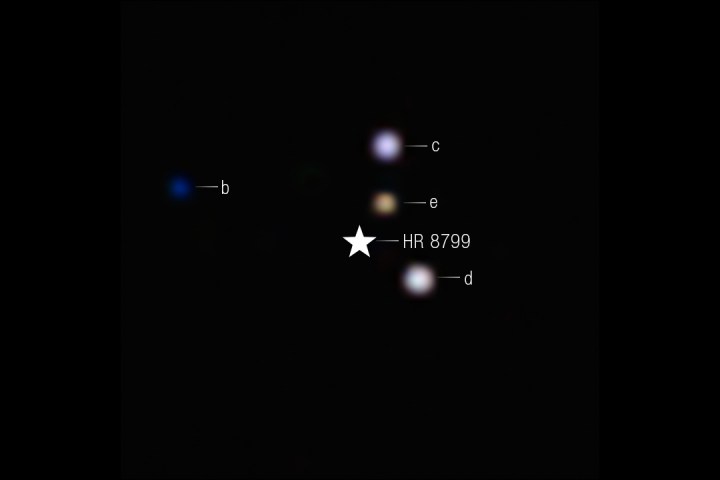The James Webb Space Telescope represents NASA’s pinnacle of precision and technology in the quest to observe the universe’s marvels. Astronomers depend on this remarkable tool to uncover profound mysteries by gazing into far-off solar systems and capturing images of worlds akin to our own.
Recently, the Webb Telescope achieved a significant milestone by capturing its first direct images of exoplanets located approximately 130 light-years from Earth. The observatory photographed four massive planets orbiting a remote star known as HR 8799. This distant solar system is relatively young, having formed roughly 30 million years ago, a mere fraction compared to the 4.6 billion years of our own solar system.
Researchers involved in the discovery noted that these planets were formed through a mechanism termed “core accretion,” in which a solid core develops before being enveloped by gas from a protoplanetary disk. This characteristic aligns them more closely with planets like Saturn and Jupiter.

Due to the intense brightness of distant stars, capturing direct images of exoplanets can be challenging. However, the astronomers utilized a device known as a near-infrared coronagraph to block the direct light emitted by HR 8799, marking the telescope’s first successful capture of a direct image of carbon dioxide.
By analyzing the different wavelengths of light from each planet, researchers also discerned the presence of elements such as oxygen, carbon, and iron in the atmospheres of these distant worlds. In addition to HR 8799, the team managed to secure direct images of another star, 51 Eridani, along with its accompanying exoplanet.
William Balmer, the lead author of the study, emphasized the significance of understanding neighboring solar systems, explaining that these insights could help us better comprehend our own solar system, life, and our place in comparison to other exoplanetary systems. This context allows us to better appreciate our existence.
The research team is now poised to further investigate other nearby stars and their orbiting bodies, with the goal of discovering more exoplanets and distinguishing them from brown dwarfs.





